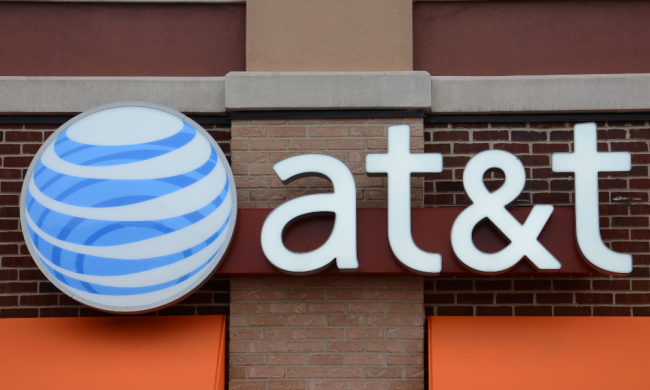Your next car could soon be a lot more connected thanks to fast wireless.
Verizon said it is partnering with Audi to embed some vehicles with 5G. Observers say it’s part of a movement to bring 5G to cars to enable personalized mobile services, new driver-assistance features, and connected innovations.
“5G, along with advanced sensors and AI, will revolutionize cars by enhancing road safety, improving traffic flow and density, reducing fuel consumption, and expanding adoption of autonomous driving,” 5G expert Paulraj Arogyaswami, a Venture Partner at Celesta Capital, said in an interview.
Your car becomes your phone
The embedded technology in Audi cars will allow a vehicle to connect to the Verizon 5G Ultra Wideband network. It will enable advanced driving features, connected services, and faster in-car Wi-Fi and entertainment.
“Your relationship with your car is about to become a lot more like your relationship with your phone,” Erik Varney, the managing director of Telematics, Industrial IoT, and Automotive at Verizon Business, said in an interview. “5G vehicles will be the ultimate mobile device. The in-car experience will be more streamlined and more connected than ever before.”
With 5G, your vehicle can be an extension of your home.
Passengers will be able to download or stream entertainment at higher speeds and with better quality than ever before, Verizon claims. Vehicles will receive firmware and software upgrades over the air — much like a mobile phone — to help ensure in-vehicle technology remains current and capable. Infotainment and navigation systems can be enhanced with HD/3D mapping and video, cloud-based user profiles, and mobile retail capabilities.
“With 5G, your vehicle can be an extension of your home,” Alyssa Altman, the head of Transportation and Mobility at digital consultancy Publicis Sapient, said in an interview. “The kids in the back seat can finish watching the movie they started at home as car entertainment becomes integrated with home entertainment. “The front-seat passenger, who has had navigation and radio station duties taken away from them, could be more productive as the car dashboard becomes more dynamic and display-oriented,” she added. “And innovations that can make the windscreen a 4K display to the passenger while remaining transparent to the driver mean that the front seat will be the cool seat again.”
Safety first

Cellular vehicle-to-everything (C-V2X) technology is designed to allow vehicles to respond to other vehicles and infrastructure around them for low-latency alerts and messages. The technology will be the basis of automated vehicles and safety advancements, such as providing a fuller view of vehicle environments beyond what drivers, vehicle cameras, and radar systems can observe.
Vehicle-to-vehicle communication allows vehicles to sense obstacles beyond the line of sight, Bernard Ku, a telecom fellow at the technology consulting firm Lumenci, said in an interview. The data could be shared video information between cars and shared information from pedestrians and infrastructure.
“5G means low latency, as in a matter of milliseconds,” Ku said. “Human reaction speed is a bit above 200 milliseconds, leading to accidents every day. 5G’s 5-millisecond latency is practically real-time, which can be used to provide the user with additional safety information before it is visible, for example, roadworks, fast-moving emergency vehicles, and visually hidden pedestrians about to cross the street.”
The future may be about fast data
Car manufacturers are just getting started in terms of integrating 5G. In the future, we’ll see dense vehicular pooling (closely spaced multi-vehicle “chains” on highways) that can increase traffic density drastically, reduce fuel consumption, and improve driver fatigue, Arogyaswami predicted.
“Consumers can also expect inter-vehicle coordination for overtaking, lane changing, and intersection transit, thus smoothing out traffic flows,” he said. “5G will enable the ultimate vision of truly safe, glitch-free, level 5 fully autonomous driving.”
Using 5G and other technologies, the car itself can become a platform for data, Altman said. “Sensors that can draw power from 5G signals will be small enough to embed into everything in the vehicle, giving a ten-fold leap on the type of data that we can get out of the current OBD diagnostics.”
Front-facing cameras and sensors could parse road conditions, making apps like Waze and Apple Maps even intelligent and notifying safety crews of concerns on the roads.
Your car could communicate for you to the dealership as you brought it in for repairs, significantly reducing the time and money you need to spend, Altman said. Onboard cameras could connect to cloud-based AI systems and process image data about drivers.
“Is that my teenage son driving above the speed limit?” Altman asked rhetorically. “Front-facing cameras and sensors could parse road conditions, making apps like Waze and Apple Maps even intelligent and notifying safety crews of concerns on the roads.”
And, as Tesla and others have shown, the car as an “Operating System” that can push updates that deliver new features and functionality is viable today, Altman pointed out.
“With 5G, those updates could come closer in real-time — car makers could push software to the car to make driving safer in hazardous conditions, like an ice storm, right as a driver starts the car in the garage,” she said.



